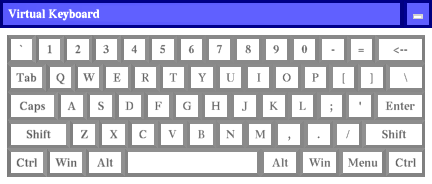Text entry in virtual environments is one of those old problems that never seem to get solved. The core issue, of course, is that users in VR either don’t have keyboards (because they are in a CAVE, say), or can’t effectively use the keyboard they do have (because they are wearing an HMD that obstructs their vision). To the latter point: I consider myself a decent touch typist (my main keyboard doesn’t even have key labels), but the moment I put on an HMD, that goes out the window. There’s an interesting research question right there — do typists need to see their keyboards in their peripheral vision to use them, even when they never look at them directly? — but that’s a topic for another post.
Until speech recognition becomes powerful and reliable enough to use as an exclusive method (and even then, imagining having to dictate “for(int i=0;i<numEntries&&entries[i].key!=searchKey;++i)” already gives me a headache), and until brain/computer interfaces are developed and we plug our computers directly into our heads, we’re stuck with other approaches.
Unsurprisingly, the go-to method for developers who don’t want to write a research paper on text entry, but just need text entry in their VR applications right now, and don’t have good middleware to back them up, is a virtual 3D QWERTY keyboard controlled by a 2D or 3D input device (see Figure 1). It’s familiar, straightforward to implement, and it can even be used to enter text.


